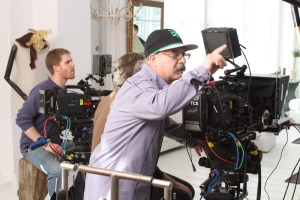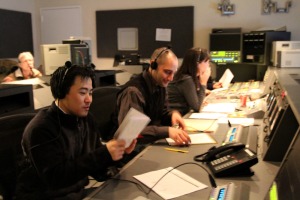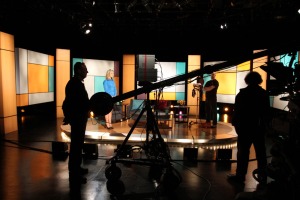by Chris Valentino, Partner/ECD
I have had the fortune of working on a number of rewarding film and video projects from independent features to documentaries, talk shows and consumer campaigns. Each project has been its own reward and offered creative and technological challenges that have thankfully proved successful. As a result, I am approached by various industries to produce and direct projects for just about every screen. With each project I am often given a creative objective or marketing task. As with any medium there is no easy answer for execution and rarely do I make the decision alone. There are talented cinematographers and technologists who understand the emerging formats and the advancing post process who I am fortunate to collaborate with. More often than not the process involves me designing a desired result wherein my invaluable crew helps determine the best way to execute it. From a video standpoint there has never been a better time to work in the medium. The technology is within reach of anyone (for better and worse) and you can push creative boundaries to new limits. Unfortunately, as technology is evolving at an ever increasing pace clients are requesting to do more and more for less and less.
Video as a technology offers a specific way to tell a story and spread a message. As it becomes easier and more readily available to produce it creates a very specific problem. I call it the “my nephew can shoot this on his iphone” syndrome. Sure mobile cameras have killed the Flip camera (thankfully), but it doesn’t mean anyone can “point and shoot”. As an artist, (and someone who handed NYU film school a small fortune) I feel a dedication to the craft. Beyond that dedication I carry a weighted responsibility and understanding of the importance of producing video correctly. I could easily discuss the number of clients who have asked to produce videos with flip cameras, over skype or on iphones, however, I still cannot figure out why. Sure it may be perceived as being cheaper, but really? Isn’t audio a major concern in an interview? Isn’t exposure a necessity for capturing the essence of your subject or is silhouette shooting the new art form? There are no shortcuts; there are no cheap avenues without sacrifice. I wish I could call every other vendor and ask them what they are thinking when they say “yes” to these requests. I wish I could speak with every client who is soon saddled with extravagant post expenses to fix their skype or flip footage. The truth is YouTube and our acceptance of America’s Funniest Home Videos has contributed to the breakdown of quality in our industry. (In March Google purchased a tech company to improve quality of YouTube videos which is hopefully a sign of good things to come for consumer quality acceptance.)
I have been asked to meet with companies to talk on this subject. I have been asked to outline my opinions on how to produce a strong video and how to capture a subject in a way that will reach and engage an audience. Each time I have the same response. Do it right, or not at all. If a client is going to spend a dollar on a video they should understand where that dollar is going to go, how it will affect future dollars and how it will impact results.
If a client is looking to shoot video, I ask two questions. The first is “what is the story you want to tell?”. The second is “what else can you capture in that time?”. For example how will still photography enhance the project? How may additional audio extend your campaign? and how will the video be used (not just tomorrow, but a year from now)? It is important to think about not just your desired results, but the greater possibilities for it. There are certain a
spects of video that you can control and it is important that before you begin a project, whether as a vendor or client, that you plan accordingly. Think big, and then allow yourself to proceed with small steps. The problems with many projects result from small thinking and shortcutting expenses without analyzing the impact.
As you embark on your next project take a moment to think objectively. Examine your costs and your desired results, and then think about what else you can accomplish. Lastly, before you unplug the USB charger on your Flip, remember your efforts need results. So, Think Big Picture. In the end tell your story and do it right or not at all.







